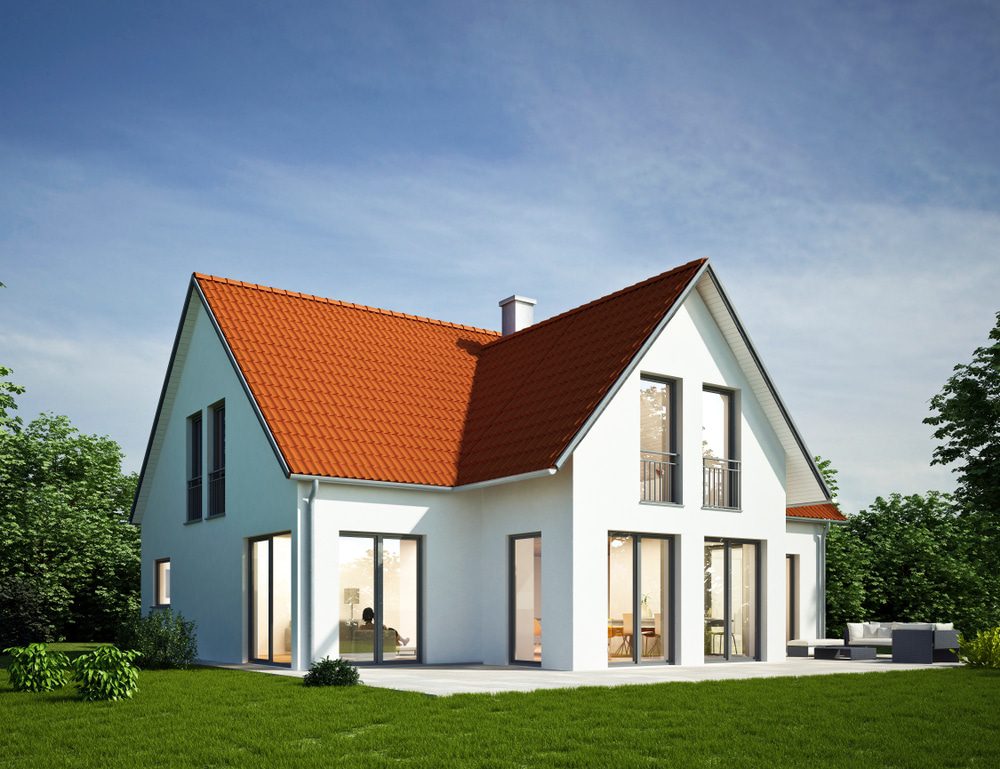The most important Building Regulations for windows and doors cover fire safety, ventilation, energy efficiency, general protection, accessibility, security and, more recently, overheating. With so many Approved Documents covering Building Regulations for England and Wales, we have extracted those relating to windows, doors and associated glazing. You will need to consider these building regulations for your property renovation project.
Whether you are simply replacing windows or embarking on a self-build, Building Regulations compliance is required. Here is what you need to know about how these Building Regulations generally affect the windows and doors you buy and your property project.

Why are Building Regulations important?
There are many compelling reasons why compliance with Building Regulations is vital. Compliance is required if your project involves a general window replacement, major construction work, or property modifications. The level of compliance also depends on the complexity of your project. Building Regulations for replacement windows and doors will not necessarily be the same as a complex project involving the construction of a new self-built home from scratch.
Overall, Building Regulations are a set of standards designed to make buildings safe, comfortable and dependable. More recently, the need to reduce carbon emissions, ventilation, health and well-being means Building Regulations are changing in line with the times.
The latest changes to the Building Regulations became effective in June 2022. The Approved Documents and Building Regulations give practical guidance on the most common situations involved in the construction of homes and buildings, and each differs because buildings all have different technical elements and aspects of building work.
Most of the requirements within Building Regulations for windows and doors are easily explained by an expert company, and some are covered in the product design from the outset, meaning you don’t need to worry about them as much. But why should you care about Building Regulations in the first place?
The legal framework
Building Regulations are a legal requirement; not complying with these means you are breaking the law. Action can be taken under Section 35 of the Building Act 1984 with fines of up to £5000 for each contravention or offence alongside potential daily fines, where you continue to not comply.
Additionally, Section 36 of the Building Act has powers for notices to be serviced requiring possible removal of the work or pulling it down and ensuring compliance is met. Whilst the consequences for non-conformance are strict, formal enforcement under Section 36 is usually a last resort.
Your home is safe
There is no doubt that compliance with Building Regulations keeps buildings safe. Whether this is insulation, security, fire protection, respect for neighbouring properties, accessibility and much more besides, the regulations are there to provide safer and better homes.
Professional tradespeople and contractors
Compliance with Building Regulations also means a better chance of working with professional contractors with expertise and knowledge and a better quality construction overall. If any contractor is dissuading you from complying with Building Regulations for windows and doors, this should be a very loud warning to avoid that contractor. On some social media forums, we see a minority of window contractors advising their customers not to bother or worry about the most recent and current requirements for trickle ventilators as just one example. If you want peace of mind that you are employing professional contractors, one way is to ensure they are aware of and always comply with Building Regulations for windows and doors.
Do not scrimp on getting professional contractors for your project. In the long run, you are better off saving money on your soft furnishings rather than reducing your costs with a cheap contractor.
Building Regulations Application vs Planning Application – what is the difference?
Building Regulations and Planning are different. Making a planning application involves you seeking permission or authorisation to carry out your intended project.
Making a Building Regulations application is requesting to have the details of your build checked and approved for current construction compliance standards.
Applicable Building Regulations for windows and doors.
What follows is a list of all the Building Regulations that can affect windows, doors and general glazing.
Part B Fire Safety
Publication title: Approved Document B (fire safety) volume 1: Dwellings, 2019 edition incorporating 2020 and 2022 amendments and updated December 2022.
Approved Document B of the Building Regulations is all about ensuring fire safety, not just for you as a building occupier, but also for other occupiers where applicable, the Fire Service and general fire safety. Examples covered by Part B include means of escape, such as egress hinges in first-floor windows, isolating a fire from spreading with fire-rated internal doors and screens, as well as other aspects such as fire warnings and detection.
Part F Ventilation
Publication title: Approved Document F: Volume 1 and valid from June 2022.
Good building ventilation is essential to guarantee a healthy living environment by providing clean air and preventing condensation, mould and sickness. With recent news articles around some of the worst social housing and tragic deaths, Approved Document F: Volume 1 covers all the details necessary for proper domestic building circulation, including continuous overall ventilation and window ventilation through trickle ventilators.
To keep it simple, all new or replacement windows and doors need trickle ventilators or other suitable ventilation method pertaining to the room in question.
Part K Protection
Publication title: Approved Document K – Protection from falling, collision and impact, effective from 2013
Approved Document K, covers Building Regulations relevant to protection from falling, collision and impact. So how does this relate to windows and doors? Modern extensions using even more glass in the form of Juliet Balconies, glass balustrades outside, and more use of glass inside means Part K is a very useful standard.
Park K covers positioning doors and windows, such as windows opening out onto a path. It is also the standard that ensures all doors and low-level windows must have safety glass and determining which are likely critical locations when coming into contact with glass or glass in doors and windows.
Part L Conservation of Fuel and Power
Publication title: Approved Document L, Conservation of fuel and power, Volume 1: Dwellings, 2021 edition incorporating 2023 amendments.
Approved Document L covers Building regulations for windows and doors in new and existing dwellings and has been recently updated. Part L covers both replacement windows and windows for new build openings, providing current and intended future guidance for energy efficiency. Volume 1 is relevant to homeowners covering dwellings, Volume 2 is for buildings that are not dwellings.
Whilst Part L is very important for windows and doors, it also covers the reduction of heat loss, air leakage, general insulation, solar gain and emissions, heating and ventilation. The U-Values required are now lower than before and are due to get even lower in the future.
Part M Accessibility
Publication title: Approved Document M – Access to and use of buildings: Volume 1 – Dwellings
Approved Document M is also a very important part of the Building Regulations because disabled people, whether with obvious or invisible disabilities, need the same ease of access to and around buildings that able-bodied users take for granted. There are several areas to Part M such as moving through a building easily, getting in and out of doorways without obstacles, and the more obvious requirements such as bathrooms. If you have disabled occupiers or are remodelling for an elderly relative with accessibility needs, Part M provides a lot of information.
Part M is also widely used in commercial buildings, shops, offices, restaurants, schools and housing developments, giving disabled users a much better experience overall.
Part O Overheating
Publication title: Approved Document O – Overheating (2021 edition), in force from June 2022
Approved Document O covers the overheating improvement requirements and only applies to new residential buildings and dwellings. It is all about providing means of removing excess heat from residential buildings.
Part O may have a significant impact on home design. The more glass you have, the more solar gain and the risk of overheating. Does this mean that contemporary slimline sliding doors will make way for smaller doors and reduced glass sizes? Will our homes’ design change to consider the requirements of Part O?
This Building Regulations document aims to protect the health of building occupiers and reduce high indoor temperatures. The design could mean taking preventative action to prevent solar gain in warmer months, from simple measures like solar control glass, installing an overhead canopy, or as simple as providing any other means of removing excess heat from indoors. There is a simplified method of ensuring compliance, such as cross-ventilation or more complex methods of compliance, such as thermal modelling. As this standard applies to new buildings only, architects will already have this standard in mind to incorporate reduced overheating into the design.
Part Q Security
Publication title: Approved Document Q: Security – Dwellings, valid from October 2015
Applicable to new dwellings, Approved Document Q is about the security of windows and doors in all materials, and the design of these must allow for provisions to prevent unauthorised access. They apply to any dwelling and in the case of apartment buildings, any part of that building where access can be gained to an individual property. Part Q need not be overly complex as many doors and windows are already tested to several standards, including Secured by Design and PAS24, STS201 or LPS1175.
This is an excellent security requirement under Building Regulations for windows and doors in new dwellings, as it even covers the design of letter plates, easily accessible rooflights, how the frames are fixed to the structure and other requirements. Document Q even gives minimum requirements for the thickness of timber windows and doors.
Further help and advice about Building Regulations for windows and doors
A professional window and door installer will already be aware of the various Approved Documents. You can contact us for details of local expert door and window companies that can help with the right products and for general advice about choosing the most suitable windows and doors. There are additional sources of information to help with your property project.
First are numerous professionals on hand to give the right advice about Building Regulations for windows and doors and explain further what the various Approved Documents mean and how to comply. In this article, we have given an overview of these requirements and can also help you when you get in touch.
It can appear that some of the Approved Documents conflict with each other. On the one hand, we have Part L, which is about sealing and energy efficiency, appearing to conflict with Part F requiring airflow and ventilation. Then there is another potential conflict with Part O covering overheating. Regulations have been written after significant consultation and learning, and any conflict is marginal compared to the benefits of these Regulations.
For windows and doors, ensure you take expert advice and treat with caution anyone telling you that you don’t need to worry about compliance. You do.
Your local Authority Building Control service and an Approved Building Inspector can help you further. People registered with competent person schemes should also be helpful with Building Regulations. Where you have a very technical consideration with meeting any of the Building Regulations for windows and doors, there are several technical bodies and expert in specific areas of glazing that can also help if you reach out to us.











